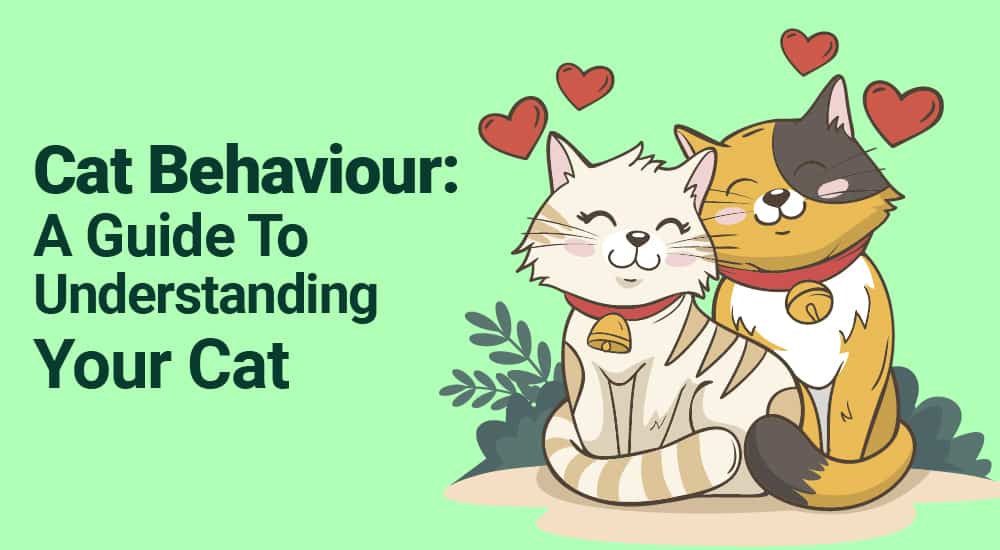Table of Contents
Introduction
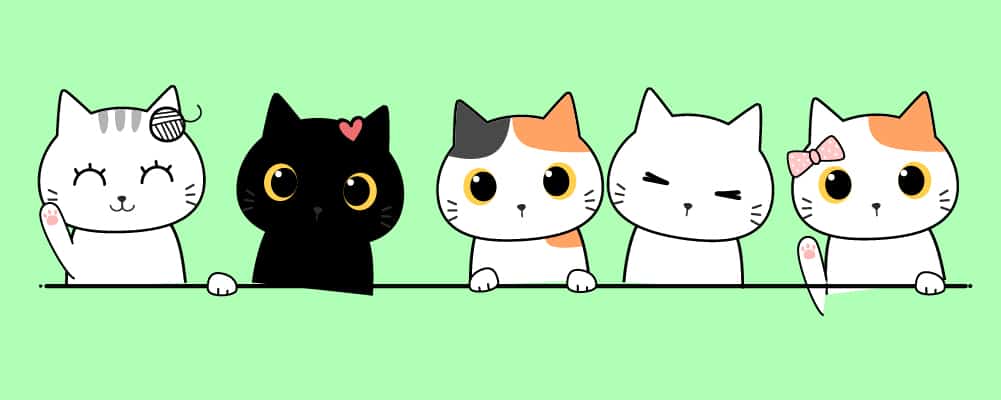
For many of us, there are very few things more important in life than our animals. The only problem is that they can be so difficult to understand! Our cats can’t speak the same language as us, so understanding them can be tricky.
Of course, while cats cannot speak with words, they can speak to us through their behavioral patterns. By understanding our cat’s behavior, we can become better owners and companions to our furry friends. With that in mind, here’s our complete guide to understanding your cat.
Common Cat Behaviors

While we do love our pets, it’s undeniable that sometimes they can exhibit some strange, and sometimes problematic, behaviors. What do they mean? Here’s what you need to know.
Litter Box Problems
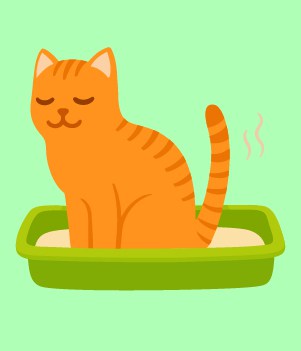
Problems with the litter box are perhaps one of the most common complaints for many cat owners.
Litter box issues can happen for a range of different reasons, including:
- Stress
If your cat is stressed, it may hesitate to use the litterbox.
Things that may cause your cat stress include family members moving into or out of the house, moving home, or pets leaving the home.
Even something as small as changing your daily routine in the home could cause your cat a lot of stress. Other things like conflict between cats can also cause some issues.
- Preferences
Sometimes your kitty’s litter issues could come down to something as simple as the fact that they don’t like the litter that you’ve chosen. For instance, some cats may prefer to eliminate on other surfaces like soft carpets or soil.
If you have used a certain type of litter for most of your cat’s life, changing it may cause some issues if your cat doesn’t like the smell of the feel of the new type of litter.
- Problems With The Litterbox
Your kitty may also have some issues with the litterbox. For instance, perhaps the litterbox is too small for your cat, or they don’t like the liner or hood on the litterbox.
Maybe the litter is a little bit too deep, or you have multiple cats and haven’t provided enough litterboxes to accommodate. Thankfully these are all issues that can be easily fixed.
- Litterbox Isn’t Clean
Cats are very clean animals, and they often don’t take kindly to a dirty litterbox! If the cat encounters a full litterbox, they may try to eliminate elsewhere instead. To avoid this from happening, you just need to clean the litterbox more frequently.
- Medical Issues
Sometimes your cat may just have an underlying medical issue that is causing them to defecate away from their litter box. It’s often best to speak to your vet if you suspect that a medical condition may be the cause of your cat’s issues with the litter box.
For instance, your cat may have painful urination and associate the litter box with pain, or they may have a metabolic issue that could mean that they struggle to get to their litterbox on time.
So now that we’ve pinpointed a few of the reasons that your cat, it’s worth finding out how to deal with it. Here are just a few suggestions.
Marking Territory
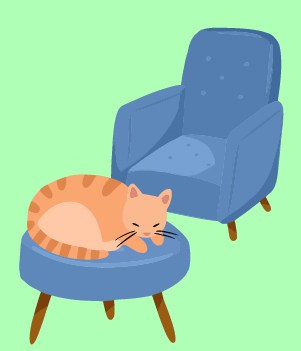
Your cat may also be getting into the habit of marking its territory.
This can be problematic, especially since we all want our homes to look and smell good! It’s only natural that it’s a behavior that you want to prevent.
There are two main forms of urine marking in cats. Either the cat sprays their urine onto a vertical surface, or they will attempt to urinate on a horizontal surface.
So why do cats usually mark their territory? It partially comes down to the fact that cats communicate through their scent.
When your cat marks their territory, they are telling other cats and animals that the location in question is their space.
As such, if there are other cats nearby, marking territory may become a little more common.
Cats can also have a habit of marking territory in situations where they’re stressed, as mentioned earlier. Also, while both female and male cats can mark their territory with urine, it’s most likely to occur in male cats.
Sometimes a cat will also spray its urine as a mating behavior, especially if the cat hasn’t been neutered or spayed. In this situation, neutering the cat can solve the issue.
It’s best to neuter your cat when they are young before they have the opportunity to adopt the behavior as a habit.
This can sometimes be a troublesome behavior to get rid of if you have an older cat, but with a few changes you can eliminate or reduce this behavior.
To start with, if your cat ends up marking its territory in a certain area, make sure that you clean the area well. Make sure that you don’t use cleaners that smell too strong as this can result in pets trying to mark the spot even more.
Try and do things that repel your cats from the area if you can, and if there are any objects that can cause your cat to mark, keep them away from your cats.
If your cat still continues to mark, then it may be worth speaking with a veterinarian for further actions to take.
Scratching

There are very few things that are more annoying for cat owners than coming home to find scratches all over the walls and furniture.
Scratching is a fairly normal behavior for cats, and there are a number of reasons as to why it may occur.
The main reason that cats tend to scratch is to mark their territory, since there are scent glands in the paws and other cats can usually see the marks left from a scratching session.
Your cat may also start to scratch if they’re bored, or will scratch as a way to clean their claws.
Since scratching is a natural behavior for cats, it’s not exactly fair to expect them to stop with it entirely. Instead, it’s better to redirect their attention. This means providing your cat with other things that they can scratch.
Have a look at the objects that your cat is scratching – consider the height, texture and shape. From there, you can find similar objects that they can scratch. Some examples include cat trees, or posts covered in rope.
Another thing that you can do is keep your cat entertained throughout the day by playing with them and ensuring they get plenty of exercise.
Biting

Cats can bite for a wide number of reasons, though it’s generally much more common in kittens. In general, young cats bite as a result of socialization issues.
It’s usually something that they’ll grow out of as they interact more with the world. An adult cat can bite for lots of other reasons, such as:
- Some cats may assert their dominance through biting. This is usually the situation if your cat bites and then refuses to back down.
- Biting can occasionally be a way of communicating – perhaps your cat wants attention and they think that the best way to get it will be through biting.
- Biting can be used as a way to stop behaviors that your cat doesn’t like. For instance, if your cat doesn’t like being picked up or they don’t like being groomed, they may retaliate by nipping you with their teeth.
- Cats can sometimes bite during play. This is normal, but it’s better to encourage gentle playing when you are spending time with your cat. It’s okay to use the paws, just not the claws or teeth!
Stopping biting behavior is also important. This can be achieved by offering your cat a toy that they can bite freely, and redirecting them to those toys when they start to bite.
Be consistent with how you correct your cat’s biting behaviors, and make sure that friends and family members adopt the same approach.
Make sure that you are encouraging gentle play, and don’t use physical punishment as this is more likely to encourage biting behavior in your cat.
Water intake

It’s important to ensure that your cat is drinking enough water throughout the day.
With that being said, some cats may not drink as much as they need to, which can sometimes lead to health issues.
In general, a cat should be drinking around 3.5 – 4.5 ounces worth of water for every 5 pounds of body weight that they have every single day.
In essence, this means if your cat weighs 10 pounds, they should be drinking around 7-9 ounces every day.
If your cat is struggling to drink water, then it may be worth getting their water intake up in some other way. For instance, feeding your cat wet food can be a good solution.
This is because wet food usually consists of roughly 70 to 80 percent water. This is a good chunk of their daily water intake.
You should keep an eye on their water bottle throughout the day though, since this will give you an indication of how much they are drinking throughout the day.
Also keep an eye out for any signs of dehydration, such as vomiting or diarrhea, reduced appetite, loose skin, depression and more. You can find the whole list of symptoms here.
Excessive Peeing

Sometimes excessive peeing in cats can be a cause for concern, though usually it may just mean that your cat is drinking a lot more.
If you suspect that this is the reason that your cat is urinating more often, keep an eye on their water intake.
Your cat may be drinking a lot because it’s hot outside and they are overheated.
There are also some common medical reasons as to why your cat may be drinking excessively include things like diabetes, hyperthyroidism, and kidney disease.
If the excessive peeing isn’t a result of your cat drinking more water, then there may be another reason. It’s often a good idea to consult with a veterinarian for advice in this situation, as they will be able to give your cat the proper diagnosis.
It’s especially important to see the vet if you think that your cat has a urinary blockage as this is a medical emergency.
Hiding

Cats can hide for various different reasons. It’s usually because your cat likes to hide to feel safe, or it could be a way that they protect themself from anything that they think is dangerous.
Cats generally tend to avoid things that are difficult rather than facing them.
If your cat is hiding out of fear, you will often find that they will emerge when the perceived threat is gone.
With that being said, sometimes cats will hide for longer periods of time, in which case they could be scared of something that’s constantly present in the house.
It’s a good idea to look into stress relief methods for your cat in this situation.
Cats sometimes hide because they are unwell or injured, so it’s often worth speaking with a vet if your cat keeps on hiding to make sure there isn’t a deeper issue involved.
Unfortunately, hiding can cause some issues for owners who aren’t sure where their cat has decided to hide. Where might a cat choose to hide? Well, the main thing is that the hiding place usually needs to be secure and private for your cat.
Some cats may choose to hide on top of wardrobes or other positions that are quite high up. You may also find a cat somewhere closer to the cat in a location that’s closed in and dark.
Some cats may just hide in their sleeping areas, or they may just find a piece of fabric like a towel to hide under!
Sometimes, your cat just needs to hide. In these situations, it’s often best to make sure that your cat has a safe place to hide, such as a cardboard box or a designated space that’s enclosed for them.
Begging
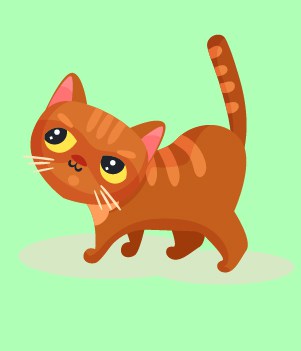
Some kitties have an intense appetite! This can often result in your cat trying to beg for more food.
Usually begging is just a sign that your cat is hungry, especially if it’s time for them to be fed.
If you are concerned about your cat’s appetite though, it’s worth speaking to a vet. You should also confirm that you are feeding your cat enough food every day.
So how do you stop a cat from begging? For starters, make sure that you praise them a lot when it’s time for dinner.
Try to ignore the begging when you can, especially if the cat is begging for you to share your food with them. It’s also important to keep your cat calm when they are begging.
Estrus

An estrus cycle is also known as a heat cycle.
It’s a time when your cat is open to sexual advances so that they can reproduce.
The estrus cycle usually occurs around when your cat enters puberty.
Cat breeding season takes place throughout most of the year, and can usually start as early as February to as late as December.
It’s particularly prominent through March to September, though.
Cats can go into estrous cycles as early as around three to five months old, and cycles may last anywhere from a few days to up to 2 weeks, and it may recur every two or three weeks.
You can usually notice whether a cat is in estrus by observing their behavior. For instance, your cat may begin to become more affectionate with their owners or other cats, or they may start to rub up against their owners a lot.
They may also make a lot more noise, and raise their rear ends into the air when they’re stroked on the back or spine. Occasionally a female cat may be more prone to urinating when in estrus.
So what do you need to do if your cat’s estrus cycle is causing issues or becoming annoying? Well, a cat doesn’t necessarily need to have kittens or an estrous cycle before they are spayed, so you can spay them straight away if you want to.
A cat can actually become pregnant as early as their very first estrus cycle, so if you don’t want to have kittens then it’s best to get your cat spayed as soon as possible.
To prevent your cat from becoming pregnant, the cat will need to have an ovariohysterectomy – essentially, they will have to be spayed. This is a surgery that’s usually recommended once a female cat reaches around six months of age.
Over-Grooming
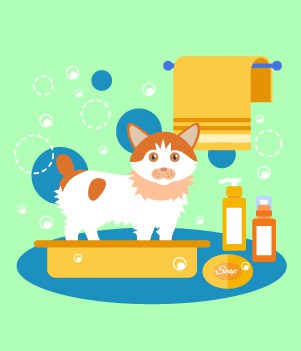
Cats are very clean animals, and they usually don’t need anything like baths since they will just groom themselves.
While grooming is perfectly healthy for a cat, you should always make sure that your cat isn’t overgrooming themselves as it can cause some problems later down the line.
For instance, if you cat grooms itself too often, it could end up losing hair or start getting sores on its skin.
Why does a cat lick itself? Well, it can often happen as a response to stress and anxiety. Cats get endorphins when they lick themselves, essentially ‘feel good’ hormones.
Thus cats may try to lick themselves to calm themselves down or make themselves feel more comfortable in situations that make them anxious.
Cats may over groom for a variety of different reasons. They may become anxious if you move the furniture or the location of their litter box.
They may become anxious if the household has become more chaotic or if you’ve moved house. They could also become anxious if a new person or animal joins your household.
It can often be hard to tell if your cat has been over grooming, but you may see a little stripe of a line of stubble fur on your cat’s body where they have been grooming. You may see it most often on the cat’s legs.
The coping mechanism will depend on what’s causing the anxiety. For instance, if you’re introducing a new pet to the home then you should try to introduce the pet to your cat gradually.
You could also install a pheromone spray product in the home, or do some play therapy with your cat.
Cat Body Language and Cat Vocalization
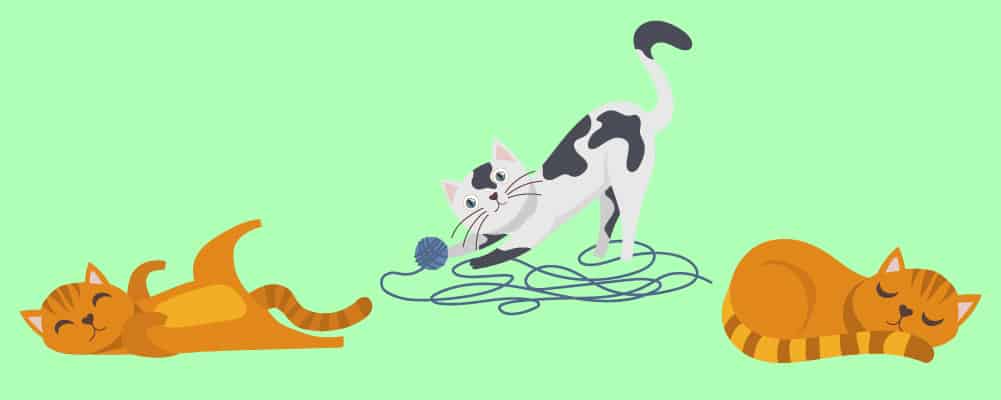
Meowing
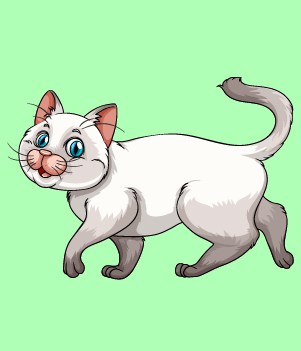
Every cat owner has woken up to their morning alarm of meows from their fur baby once or twice.
But why does a cat meow, and what if they are meowing a lot?
Well, just like different words in English can have different meanings, so can different meows!
Your cat is trying to tell you something in their own little language.
Here are a few of the things that your cat’s meowing could mean.
- Pain
Have you heard your cat meowing a lot more than usual lately? It could mean that they’re hurt.
For some cats, excessive meowing isn’t out of the ordinary, but sometimes for cats that are rather quiet it can be a sign that they have a medical condition that you will need to get checked out with a veterinarian.
- Greetings!
If your cat is meowing from you after you’ve just come back from a long day at work, they may just want to say hello. They may just meow at you at home to say hello too, even if you only saw them five minutes ago!
- Pay Attention to Me!
If your cat has started suddenly meowing at you, it may be that they are simply trying to get your attention. Perhaps they want a little bit of time to play with you, or they want some TLC. You may also see your cat brushing up against you when they want attention.
- Food Please?
If your cat keeps meowing at you around dinner time, it may be their way of telling you that they’re hungry and they want food. This may be a little more obvious if your cat is leading you to their food bowl and it’s empty.
It’s best not to feed them straight away though. Wait for your cat to calm down a little bit first and then feed them. If you feed your cat every time they meow at you, you may find that they will try to meow more often to get you to feed them.
Certain cat breeds may also just meow more than others. Some breeds that are rather vocal include the Maine Coon, Bengal Cats and Siamese cats.
Howling
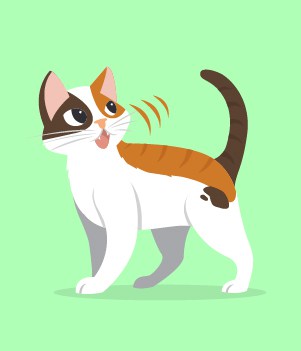
We usually associate howling with dogs and wolves, so you may have been a little shocked the first time that you heard your feline howling.
Howling is another way that your cat may communicate with you, and they howl for a number of reasons.
First of all, howling in cats is fairly common when a cat hasn’t been neutered or spayed. Howling is your cat’s way of luring in nearby suitors that they can reproduce with.
Your cat may also start howling if they have been stressed out or if they’re bored.
It’s a common response to anxiety, and your cat’s howling may be a sign that you need to spend a little more time with them or buy them some fun new toys!
Your cat may also howl if they are injured or sick, and a condition called cognitive dysfunction syndrome can sometimes cause older cats to start howling.
This condition can leave your cat feeling very confused, so they may start howling as they are kept awake during the night.
If you want to stop your cat from howling, you first need to figure out the reason why they are doing it.
If the cause isn’t obvious and isn’t solved by giving your kitty a new toy or some affection, then it’s worth speaking to a veterinarian to check if there are any underlying issues.
If it’s caused by something like stress then it’s important to practice anxiety management techniques with your cat, such as gradually introducing them to things that you think may scare them. Learning how your cat responds to certain situations is important for understanding how to deal with their howling.
Yowling

Yowling can be a pretty alarming cat vocalization to hear if it’s not something that you’re familiar with.
If you’ve never heard yowling before, it’s essentially a very long meow that’s drawn out, and you may commonly hear it during the night.
Cat yowling can be pretty annoying too, since it’s usually not one singular yowl – it’s usually a few yowls that are done in succession.
Yowling doesn’t happen for any particular reason – actually, it can have a few meanings.
Your cat may yowl because they are hungry or they want food.
They may also yowl to get you to pay attention to them, especially if your cat likes to have a lot of attention from you. If this is the case, feeding your cat or giving them some attention may help to make the yowling stop.
Cats may also yowl out of boredom. One of the most common reasons that a cat may yowl, however, is due to their hormones.
If it’s breeding season, your cat may be in heat, which could be a reason why they are yowling. Having your cat spayed may help to stop the yowling in some situations.
Sometimes a cat’s yowling may not have any obvious cause, in which case it’s a good idea to monitor your feline’s behavior and what triggers the yowling.
Perhaps they usually yowl when they’re around a certain family member, or by the window when another cat walks past. If you are concerned about it though, it’s definitely worth speaking to a veterinarian about it to get a second opinion.
Crying

It’s not nice to hear your kitty crying, but thankfully there is a solution!
Crying can happen for a few different reasons, though it’s most common in kittens.
For starters, your kitten may start crying when they are lonely. Kittens are very energetic creatures and they need a lot more attention than an adult cat.
Crying in your kitten may signify that they want you to play with them or give them some love.
If your kitten hasn’t long left another household then they may start crying as they are looking for another cat or for their mother.
It can help to make sure that you are putting some time aside to spend with your kitten if this is the case.
A new house can seem very large to a small baby kitten too, so it could be that your kitty has just gotten lost in the big, wide world.
They may be crying to get your attention if they’ve gotten lost and don’t recognize where they are, or maybe they aren’t sure where their litter box or their bed is from where they are.
It can help to give your kitten a little less space to work with at first and then gradually introduce them to the rest of the house so that they can get used to their surroundings and they don’t get hurt.
Unsurprisingly, another reason that your kitten may start crying is that they are hungry. Cats can sometimes make a lot of noise when they need to be fed!
It may mean that you need to feed your kitten more often. It could also mean that your cat needs to use the toilet, so it’s time to direct them to the litter box.
The most obvious reason as to why your kitty may be crying though is because they’re in pain. This may sound more like a shrieking cry, and it’s a sign that they may need a little extra help.
In some circumstances, you may need to take your kitten to the veterinarian for further assessment.
Hissing
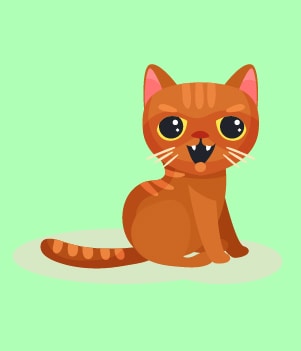
Hissing is a behavior that you want to take note of in your cat. It’s very common, and you’ve probably seen your cat hiss once or twice before. So why might your cat hiss?
- To Give Warning
The first, and most obvious reason that a cat may hiss, is to give a warning. This warning may be issued to a human or to another animal.
If your cat hisses at you or another animal, it’s a good sign that you should back away, or else they will be forced to attack in retaliation.
Cats aren’t generally confrontational animals, so they would prefer to warn you if they feel threatened. It’s an especially common behavior in cats that haven’t been neutered.
- Stress
Sometimes your cat may hiss if they are feeling stressed. If your cat is about to run away from something that’s scaring them, they may hiss beforehand. Your cat may also hiss if they are about to fight with you or another animal.
- Playing Rough
Sometimes a young cat or a kitten may hiss before they’re about to start playing rough. If they’re playing with another cat, your cat may hiss to tell the other one that they’re playing a little too rough.
A Guide To Cat Moods
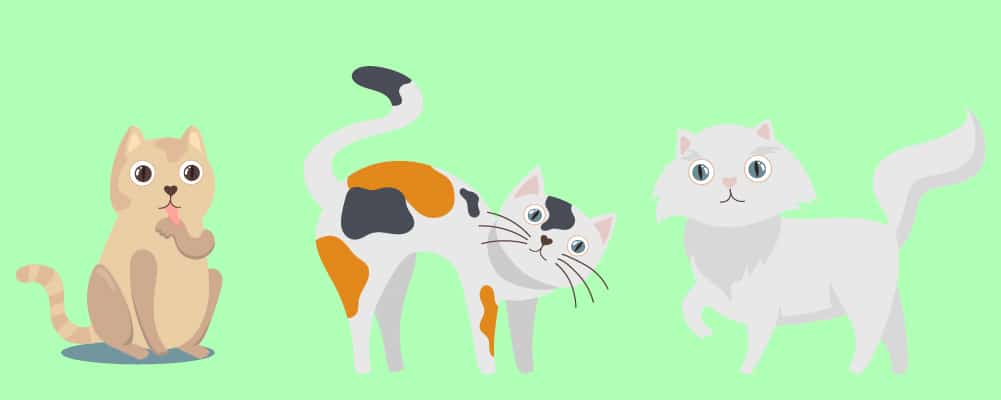
Contentment
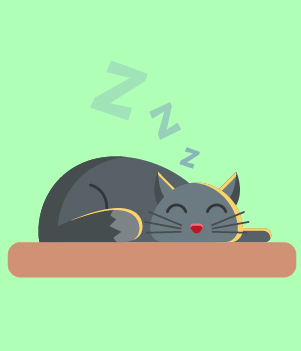
Every cat owner wants to have a happy kitty, but how can you tell whether your cat is happy?
There are a few different things to look out for.
- Vocalization
As we’ve mentioned above, cats can make noise for a wide variety of reasons, but sometimes a high pitched meow can tell you that your feline is very happy.
You may also hear your cat purring if they are happy.
- Relaxed Posture
Your cat’s posture can say a lot about their mood. In general, if your cat has its paws tucked uner its body while it is sleeping, it’s a great sign that your cat is feeling content.
Your cat’s tail may also stand straight up if it’s happy, and it may crook the tip of its tail to say hello!
- Keeping a Healthy Appearance
If your cat is well groomed, it’s a good sign that they are content. They may even start to groom their companion cats or their owner if they are happy.
- Expression of Eyes and Ears
If you see your cat’s eyes suddenly dilate, it’s a good sign that they’re in a good mood! If your cat’s ears are facing mostly forward with a slight tilt, this is another good sign that they are happy.
Playfulness
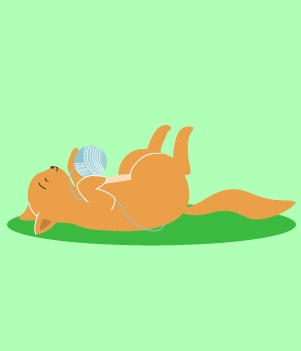
Some of the signs of playfulness in cats are very similar to signs of contentment, just with a little more energy.
Again, you may notice that your cat has dilated pupils, and their tail may be raised in the air in a relaxed manner.
If your cat is feeling playful, they may also run around a lot more and direct you towards any toys that they have so that you can have some fun together!
Your kitty may also make chirping noises.
Irritated
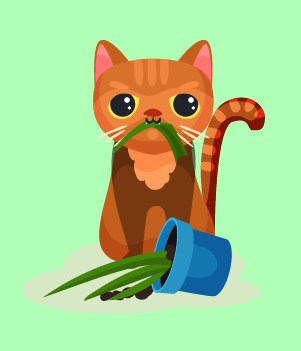
Cats are famously known for seeming like they’re perpetually annoyed at people, but cat owners know that this isn’t always the case.
With that being said though, cats do get annoyed sometimes. How can you tell if your cat is irritated?
One of the first things you can do is look at your cat’s tail. It may start to swish back and forth, and there may be a little flick at the end.
Your cat may also do some other things, such as emit low pitched meowing sounds.
If your cat is just irritated then they may not be spitting or hissing yet, since your cat is just trying to give you a warning.
You can also look at how the cat is positioned. The cat may turn its head away from you, and it may move away from you in general. They may also crouch down and their ears could be turned back.
If your cat is irritated at you, it may be a good idea to give them some space before they get angry!
Nervous/Anxious
Despite how fearless cats may seem, they can get scared and anxious too.
We’ve already covered a lot of the signs of anxiety and nervousness in cats.
Here’s a quick summary of some of the behaviors that you should keep an eye out for when trying to see if your cat is anxious or nervous.
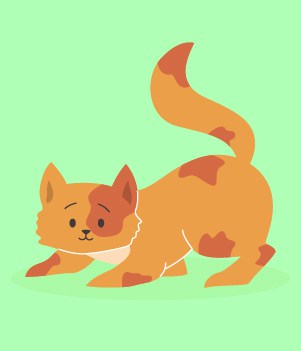
- Slightly flicking the tail
- Pupil dilation
- Avoidance of eye contact
- Constantly looking at the thing causing the anxiety
- Crouching
- Attempting to escape
- Ears pricked up
- Aggression
- Staring
- Hiding
- Hair standing up on end
Frightened

There are very few things worse than when your pet is frightened.
Many of the signs that your cat are scared are similar to the ones that you may see if your cat is anxious.
Every cat has a different way of showing fear too.
As with anxiety, you should look out for signs that your cat is trying to hide from something.
In addition to this, cats may also show signs of aggression when they are afraid, such as biting, scratching, hissing and more.
Your cat may also lose control over their bladder and the bowels, or they may freeze completely in place.
It can often help to remove the cat from the thing that frightens it, or to find ways to calm your cat down if you can tell that they are scared. It is also a good idea to try and desensitize your cat from the thing that it’s scared of.
If the fear doesn’t go away, it may be worth checking with your veterinarian to see if there’s a deeper reason for the fearful behavior.
Angry
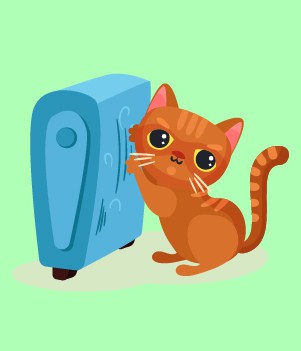
It’s very important to know how to tell when your cat is angry, as it can help you to know how to deal with the anger.
The last thing you want to do is to continue to aggravate a furious feline. There are a few signs to look out for when your cat is angry.
First of all, your cat will make some tell tale noises that will show you that they are angry.
They may begin to growl, hiss, or make guttural sounds. When you hear these, it’s time to take a step back and leave your cat to cool down.
Your cat may also flick their tail back and forth rapidly, or hold their head down low. You may also see the hair on the tail standing up. You can keep an eye out for constricted or dilated pupils too, as this can tell you if they are angry.
As we’ve already discussed though, dilated pupils can signify a lot of things, so it’s best to use this sign in tandem with others.
Check out your cat’s body language too – if they are arching their back or they’re swatting at you when you try to touch them, it’s a pretty good sign that you need to back off.
Defensive
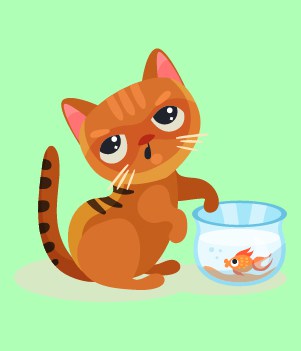
Some cats may behave in an offensive manner when they are afraid or they are angry. Other cats may show defensive behaviors instead, though.
For instance, a cat may crouch down when they are being defensive with their head tucked in.
You may find that their eyes are open wide, again with those dilated pupils on show.
Sometimes you may also witness retracted whiskers, or your cat may turn sideways from the object of their interest rather than facing them straight on.
Again, you may also notice your cat starts to spit or hiss. In summary, if your cat is showing outwardly aggressive or defensive behavior, it’s a good sign that you need to keep your distance for a while.
Monitoring Your Cat’s Behaviour

As we’ve already demonstrated, keeping an eye on your cat’s behavior is vital for you to understand your cat. Your cat’s behavior can help you to understand their health, mood and more.
If you are home, it’s a good idea to keep an eye on your cat in intervals throughout the day to see how they behave.
See how they behave around meal times, around certain family members and other things that may cause behavioral changes. Make sure that you consult a vet if you’re ever concerned about your cat’s behavior.
If you work a lot and you’re often out of the house, it may be worth installing a cat camera in the house to see what they do while you’re gone. This is a good way of monitoring their behavior when you’re not around.
Essentially, it’s important to monitor your cat’s behavior from time to time, especially if there are any behaviors that are concerning you.
Summary
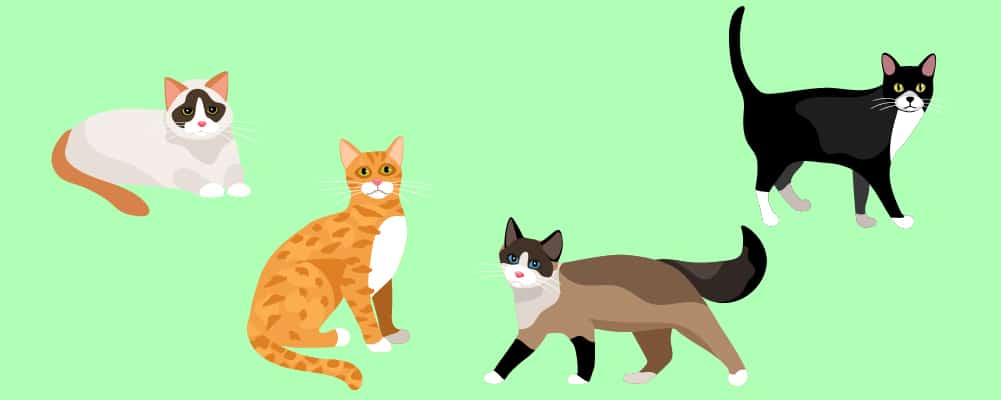
Cats can be elusive creatures, but by understanding our felines better, we can connect with them a lot more easily. Your cat’s behavior can give you great insight into their mood and their health.
So, the next time you see your cat meowing at you excitedly you can understand why!
Citations
- https://www.humanesociety.org/resources/preventing-litter-box-problems
- https://www.purina.co.uk/cats/behaviour-and-training/training-your-cat/stop-cats-biting
- https://pets.webmd.com/cats/guide/dehydration-cats
- https://www.aspca.org/news/pet-health-alert-urinary-blockage-cats-can-be-life-threatening
- https://www.aspca.org/pet-care/cat-care

